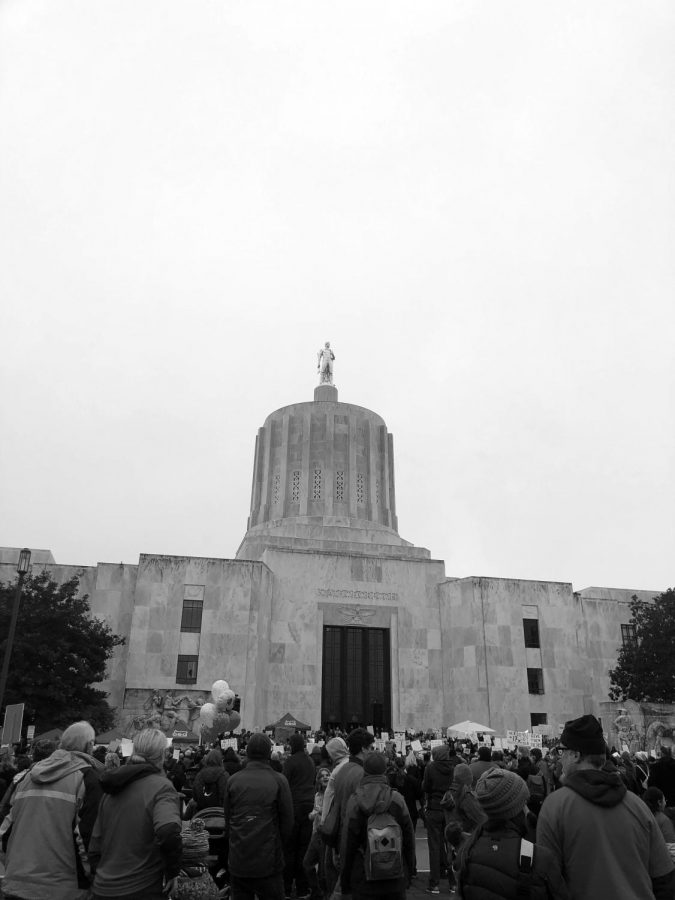Oregon educators rally to protest lack of funding
Do schools need more money to aid with student behavior?
April 9, 2019
Thousands milled around the steps of the state capitol building on Feb. 18, 2019, wearing bright red in support of the “Red for Ed” movement. The statement at hand? A call to action to right what some say is severe underfunding of Oregon public schools.
Students in the Oregon public school system are learning in an environment funded at nine percent below the national average. According to the Oregon School Boards Association, that percentage translates to a $2.5 billion gap in Oregon’s budget for education. According to the instigators of the event, this lack of funding is being felt by educators and students across the state.
At the protest, speakers cited experiences of having to use their own money to provide enriching classroom experiences for their students because the allocated funding was insufficient. Legislators claimed that “billions more” are needed and schools must be funded “in the way that is needed.” Protesters hoisted colorful posters reading “35 is a speed limit, not a class size.” and “Education shouldn’t be a debt sentence.” The protesters and elected officials seemed to agree that the funding issue is a serious one. So, where has the money gone?
Measure 5 was passed by Oregon voters in 1990 limiting property taxes. Its approval was the first of three anti-tax measures of the decade. According to Oregon Business, these measures have now reduced local revenues by $41 billion after just 16 years. The $2.5 billion gap in the budget for Oregon education is largely credited to this anti-tax wave.
While this has been playing out on a state level, students and faculty at Tualatin High School, along with other public schools across Oregon, have also felt the consequences. Large class sizes, frequent student outbursts and lack of individualized attention for the students who need it most are all issues that the protesters say are a part of the fallout from the lack of funding.
Jeffrey Prescott, a learning specialist who works with students with special needs, said, “There is a lack of student access to education. To me, education comes through the adults that support them. Most of our kids need a lot more adult help.” He went on to add that, “A lot of resources seem to go to what’s new and fun, rather than what is important and not always fun. Managing kids in classes isn’t as fun as a new teaching strategy.”
Freshman Abby Sass also sees issues stemming from a lack of funding for public schools in the classroom. She noted witnessing “at least one violent outburst this year, from someone who did not agree with something the teacher was saying… the issue is legitimate. These outbreaks are occurring more and more as we see the years go by.”
English teacher Shem Malone said, “I don’t see the violent outbursts and have rarely experienced any problems. This may be due to my size. I think [violent outbursts and class sizes] are separate issues.”
In short, the billion-dollar-deficit is being felt statewide¾by staff and students alike. Even here, at TuHS. There were thousands of frustrated educators chanting, marching, and presenting on Feb. 18, but the funding issue is a complicated one that, according to the activists, affects many, many more.
Malone added, “We always need to try and help the people who need it. I am a believer in education for all.”

